Some of the boldest reform experiments underway in the wake of the national reckoning on police violence and systemic racism following George Floyd’s murder are pilot projects in Denver, San Francisco, Portland, Oregon, and elsewhere. They’re confronting hard questions about what role, if any, police should play in responding to calls for persons in nonviolent mental health, drug, alcohol or homeless crises.
‘Build Something Powerful’: Oakland Aims to Remove Police From Some Nonviolent 911 Calls
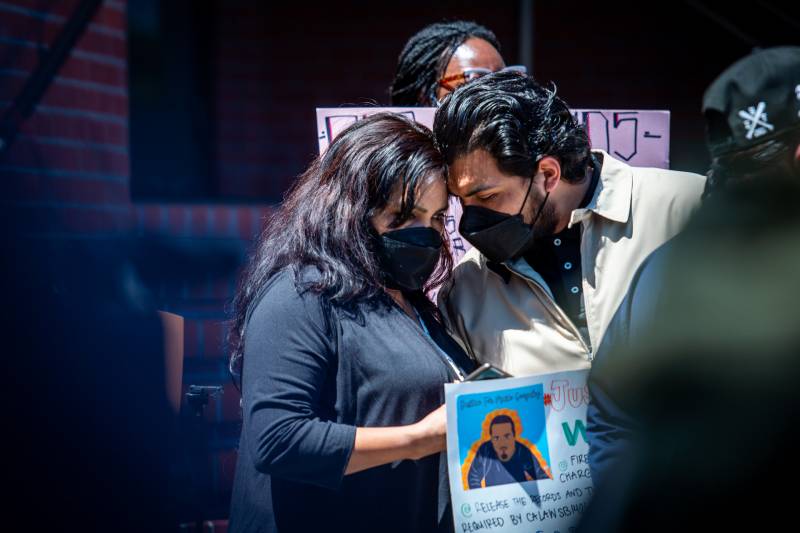
This fall, Oakland aims to join those cities when it launches a pilot project to funnel some nonviolent, noncriminal calls to new, mobile teams of civilians.
“Not only mental health, but the whole range of lower-level issues that shouldn’t require a gun to be part of the response,” says Rebecca Kaplan, the city’s vice mayor who has championed the nascent program called Mobile Assistance Community Responders of Oakland, or MACRO.
Kaplan says sending police to mental health and behavioral calls they are not trained to handle is a grave mistake cities keep repeating. “Those cases often go very badly and sometimes horrifically,” she says. “We have seen horrific deaths, killings by police throughout the nation when they’ve been called for matters that deal with mental health or homelessness or public intoxication — or any of these matters that are not a violent crime — and should be better handled by a non-police response.”
One study estimates people with an untreated mental illness are 16 times more likely to be killed during an encounter with police than other civilians.
MACRO is part of a wider effort by the Oakland City Council and Mayor Libby Schaaf to rethink how law enforcement operates in a city where the police department has been under federal oversight now for nearly two decades.
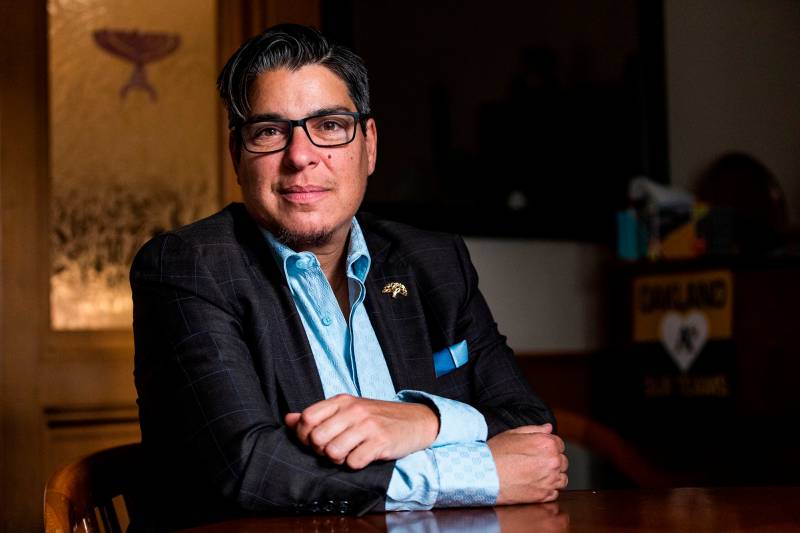
Oakland’s Unique Strategy
The pilot program will operate under the fire department, but the teams will be made up of civilians, not sworn firefighters. And in hiring, the program will place a greater emphasis on lived experience over formal education. It’s a unique Oakland take among urban police reform efforts underway. Most cities’ pilot street teams are sending out a trained and licensed clinical social worker or psychologist.
“I think the community was crystal clear and has continued to be crystal clear that they do not want a licensed social worker as part of the street team,” says Oakland Deputy Fire Chief Melinda Drayton.
And so Drayton, who’s spearheading the department’s efforts on MACRO, says the fire department aims to deliver what the community wants.
The civilian teams will deescalate problems, check vitals and potentially get a person in crisis off the streets, she says, by connecting him or her to services anywhere in the city except a jail, a psychiatric ward or a hospital.
“We’ll be able to take them to city, private nonprofit community-based services, health care clinics. Maybe to their dad’s house,” Drayton says. “As simple as that. ‘Where are you going to feel safe for the night?'”
The plan is for a civilian emergency medical technician to be paired with someone, for example, with first-hand knowledge of the mental health, criminal justice, homeless or drug treatment systems.
“Sometimes people just need to be heard. Sometimes people just need a warm blanket. Sometimes people just need to sober up, you know?,” says Cat Brooks, co-founder of Oakland’s Anti Police-Terror Project, who has worked on this issue for years. “I mean, sometimes, [people] need to be able to scream. Like, why is that such a big deal? Why does that scare us so much? Look at the world that we live in. I want to scream all the damn time!”
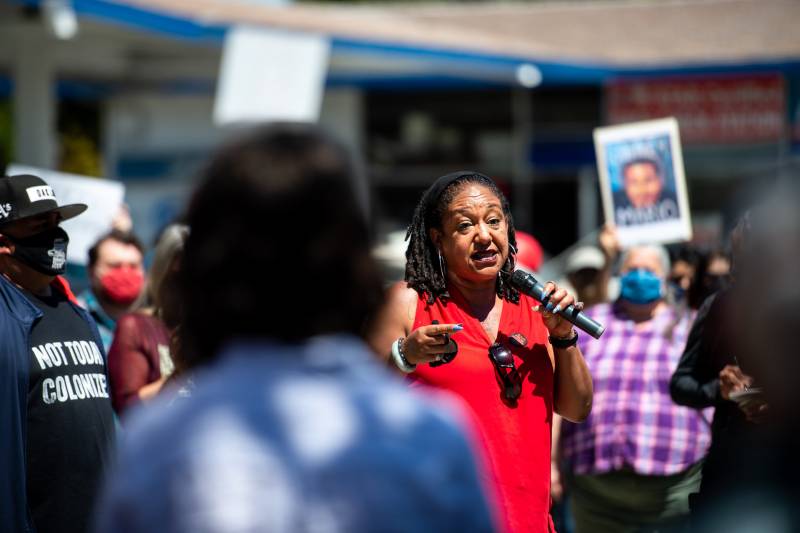
Brooks, a key advocate for MACRO, believes the best people to help are those with street knowledge of the systems that have failed them, what she calls “the medical-industrial complex.”
“And that complex — doctors, nurses, psychologists, social workers — stereotypes Black, brown and indigenous bodies. Criminalizes Black, brown and indigenous bodies just as much as law enforcement,” she says. “And so these models have to be more about the ideology and practice with which we respond.”
Concerns About the Pilot
Still, some worry emphasizing ideology over formal training goes against the science and art of mental health care and could undermine the program’s effectiveness.
“Social workers have a lot to offer as we re-imagine public safety, policing and seek to strengthen our crisis response capacity,” says Sarah Butts, director of public policy for the National Association of Social Workers.
She says the group fully supports communities creating whatever model works best for them. And Butts agrees that peer counselors with life experience in these systems can and are often an important part of any front-line response.
But she says extensive education and training do matter when addressing the often complex mix facing someone in a mental health or substance use crisis.
“Social workers will have a skill set — problem-solving, relationship building, de-escalation — that really lends itself to this to this type of community problem solving,” Butts says. She notes nonpolice responders must accurately assess the situation quickly under often stressful conditions. “And then decide what is the most effective response.”
Whatever model cities use, it’s important they collect and share data on what’s working and what’s not “so that we can learn from our experience and improve these systems,” Butts says.
As NPR has reported, across the bay in San Francisco, the city’s new police-free Street Crisis Response Teams put a fire department paramedic with a trained clinical social worker and a peer counselor to help respond to some crisis calls for people who are homeless, intoxicated, having a mental health challenge, or all of the above.
The four teams now deployed in San Francisco’s pilot project are, so far, able to respond to only a small number of the overall behavioral crisis calls in that city. But it wants to scale up the program this summer when San Francisco Mayor London Breed hopes to add a companion program of unarmed “wellness” teams to work with the street teams to handle even lower-level calls. It’s part of the mayor’s wider pledge to change policing in the city.
Flashpoints with Police
With startling repetition non-criminal crisis calls to police — often by a friend or loved one — continue to be flashpoints for violence and death.
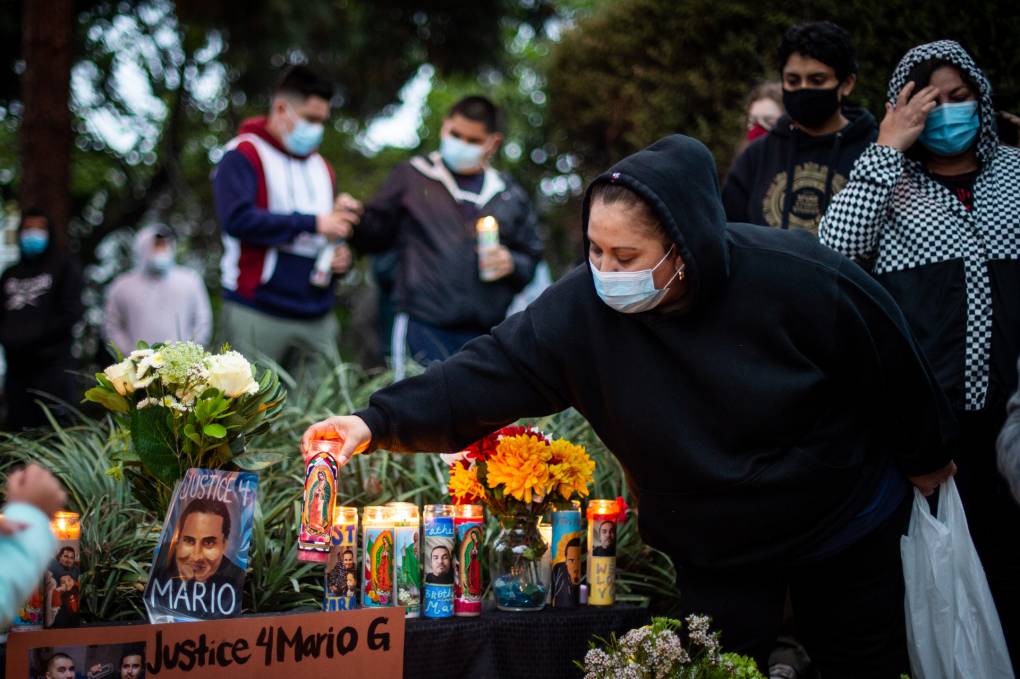
Examples include Walter Wallace in Philadelphia, Daniel Prude in Rochester and in late April, Oakland resident Mario Gonzalez, who died in Alameda Police custody. The 26-year-old was in a small park in Alameda when 911 callers expressed concerned Gonzalez was mumbling to himself and maybe high or drunk.
“He was talking to himself and what else was he doing?” the 911 dispatcher asks one caller in tapes released by Alameda police.
“He’s just hanging out,” the caller says, “I mean, he seems like he’s tweaking. But he’s not doing anything wrong. He’s just scaring my wife.”
The two 911 calls make clear there’s no violence, imminent threat or any discernible criminal activity, save a couple bottles of booze with the security tags still attached, indicating they were probably stolen.
Alameda police soon arrive. Body cam footage shows officers question Gonzalez about what he’s doing in the park, and ask for his ID. Gonzalez, who is calm but fidgety, mumbles several largely incoherent responses and does not appear to be fully lucid.
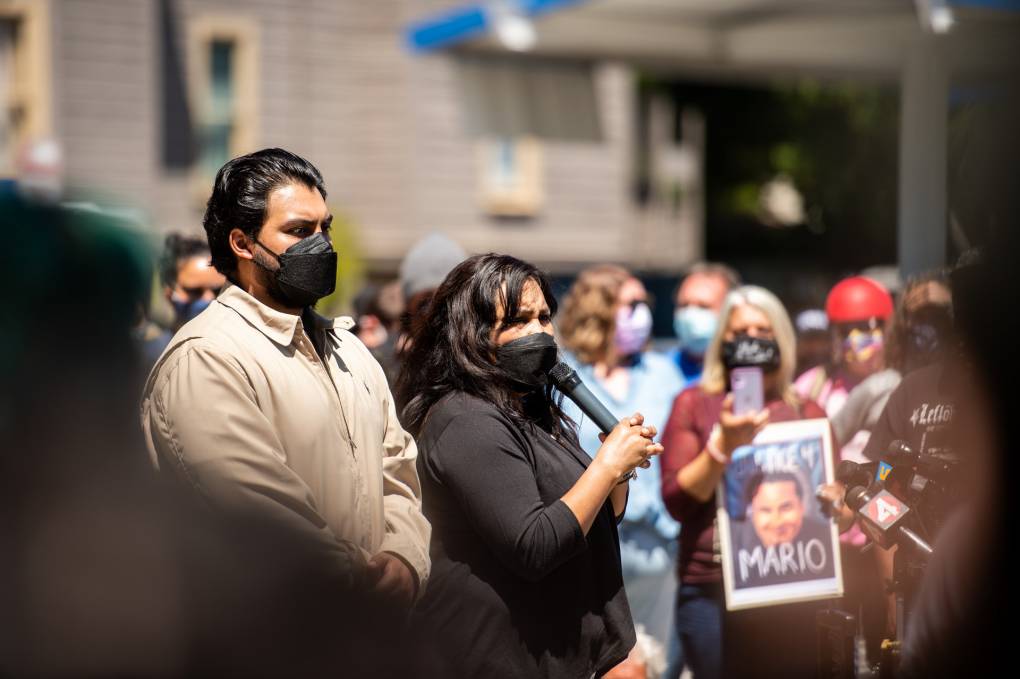
Without telling him he is under arrest, each officer grabs one of Gonzalez’s arms and proceeds to try to put his hands behind his back. When he bends over and resists being handcuffed, one officer says, “Please stop resisting us, OK? Don’t fight us.”
Gonzalez continues to resist, and the two officers take him to the wood chip-covered ground, pinning him on his stomach, with at least one officer pressing an elbow and knee into his back and shoulder. They eventually handcuff him.
The two officers continue pinning Gonzalez to the ground for a total of roughly five minutes, with at least one of them pressing his elbow and knee into his back.
As Gonzalez becomes motionless, the officers shout his first name, check for a pulse, roll him fully over, and begin administering CPR, with Gonzalez’s hands still restrained behind his back. About a minute later, they remove his handcuffs and continue performing CPR, repeatedly shouting for him to wake up.
Gonzalez leaves behind a grieving family including a 4-year-old son. He was also the main caretaker of his 22-year-old autistic brother, his family has said.
The Alameda Police Department officers involved are on paid leave while multiple agencies investigate. An autopsy is pending.
Timothy T. Williams Jr., a police tactics expert, says police need clearer guidelines around “positional asphyxia” — or detaining someone in a way that compresses their airways and reduces the ability to breathe normally.
The Alameda Police Department’s policy manual states that a suspect “shall not be placed on his/her stomach for an extended period, as this could reduce the person’s ability to breathe.”
But Williams says that guideline isn’t specific or directed enough. “Once he or she is handcuffed, they are to be immediately removed from the prone position, put on their side, and, if possible, sat up.” Otherwise, he says, “You leave everything to subjective interpretation: What may be short to you may be long to me.”
“There was no reason whatsoever to go hands-on with Mario,” says civil rights lawyer Julia Sherwin, who represents his family. She has formally asked the U.S. Department of Justice to open a civil rights investigation into the Alameda Police Department.
Sherwin says Gonzalez was unarmed, holding only a comb. “He’s been combing his hair and he’s been loitering there for half an hour. Why this required a law enforcement response is beyond me.”
It’s instances like this that have led Oakland to its experiment.
Much Work Remains
In Oakland, Mayor Libby Schaaf originally pushed to put MACRO under an area nonprofit. The city council rejected that idea. Despite ongoing political tussles with the council, Schaaf “wholeheartedly supports this and it is part of her budget proposal,” says her communications director Justin Berton. “We hope it will be up and running as soon as humanly possible.”
Big details in implementing the plan remain. The fire agency, already stretched thin, now has to hire, train and equip new teams of civilians.
The Oakland Police Department, for their part, are largely staying quiet on the program for now and letting city hall, the Oakland City Council and fire department work it out.
And police will still, at first, handle all 5150 calls — that’s the code that allows police to involuntarily confine someone exhibiting behavior that’s “the result of a mental disorder,” and who appears to be endangering him or herself or others.
A big unanswered question is what percentage of the nearly quarter-million annual 911 police calls in Oakland will eventually be transferred to the new unarmed, police-free teams. One city councilwoman says the goal is 20% of nonviolent 911 calls within three years.
Deputy Fire Chief Drayton says, at first, the percentage will be far smaller. The aim is to grow over time but start small: one team working a swing shift five days a week going after the relatively low-hanging fruit of noise disturbances, welfare checks, loitering and such.
And the city’s 911 dispatchers will very likely need additional training. The program will put enormous pressure on those dispatchers who will, at first anyway, have to decide which calls to funnel to MACRO or to police for a more traditional response.
But activist Cat Brooks of the Anti Police-Terror Project says using the traditional 911 system at all for these new teams is a big mistake. She has helped set up a separate non-police, non-city run mental health response program that operates on weekend nights called MH First Oakland that uses a separate phone number, not 911.
“Broad swaths of Black and brown people will not call the police ever for any reason. Someone could be being shot in broad daylight in front of their house, and they are not dialing 911. Why? Because our lived experience is police do not make it better when they show up,” says Brooks. “Things almost always are worse.”
Despite those big concerns, Brooks remains cautiously hopeful the new effort will mean real change for a city and police department that have been under federal oversight now for nearly two decades.
“If we can just get out of the Oakland bureaucracy, red tape, ego and drama,” Brooks says with a smile, “I think there’s an opportunity for us to build something really powerful.”
This story includes additional reporting from KQED’s Matthew Green.
9(MDAxOTAwOTE4MDEyMTkxMDAzNjczZDljZA004))
